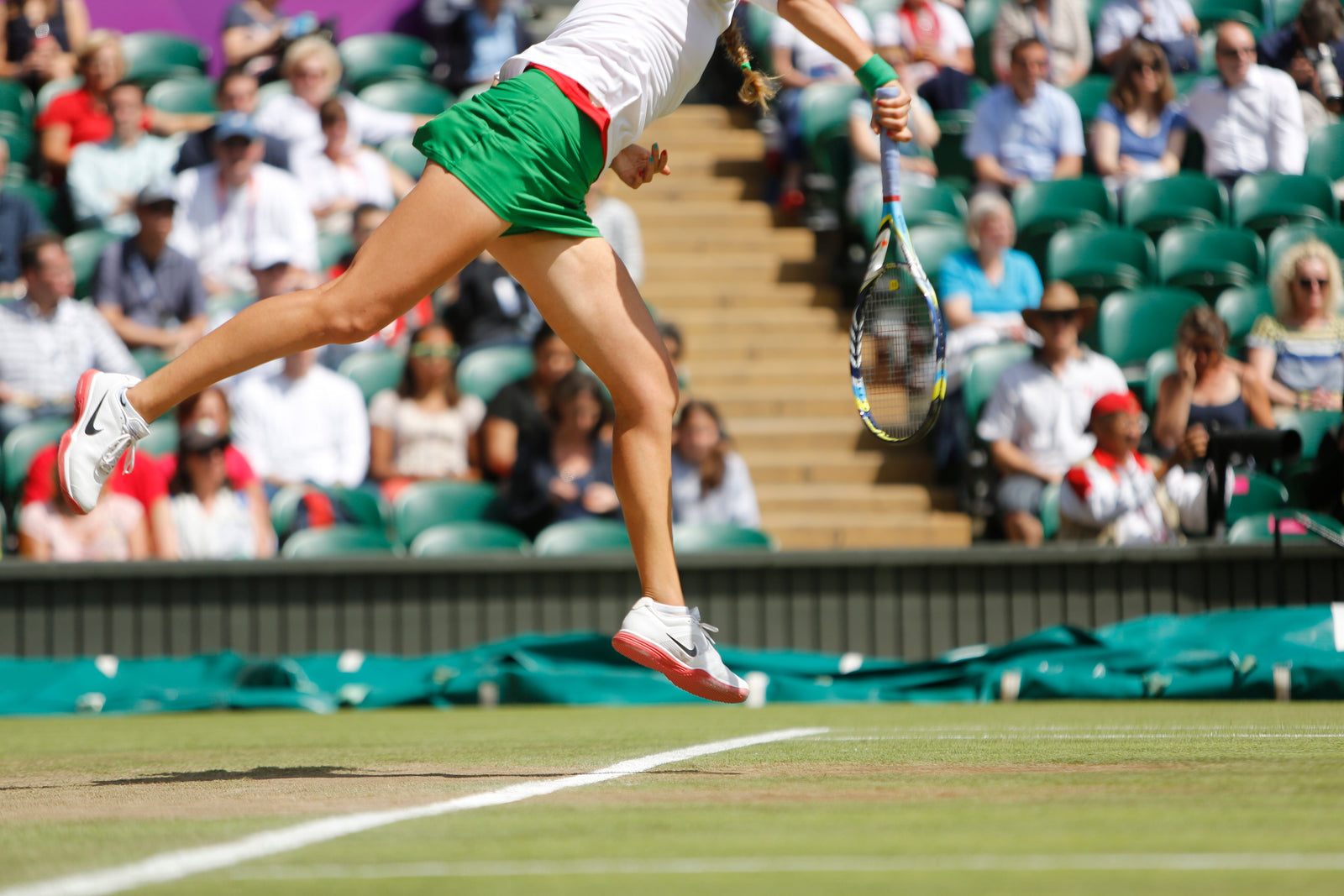Wimbledon is here. While the world tunes in for strawberries and Centre Court drama, physios (and a few savvy players) know it's also peak season for wrist twinges, dodgy knees, and shoulder flare-ups. With explosive movement, full-body power, and repetitive actions inherent to the sport, tennis can be a high-risk sport for injuries.
But here's the good news: with the right taping techniques and recovery tools, many of these injuries are manageable – or even preventable.
Why Tennis Injuries Happen (And How Physios Can Help)
From lateral epicondylitis (aka tennis elbow) to ACL strains and rolled ankles, tennis puts stress across the kinetic chain. As a physio, you're in a prime position to help players (whether recreational or pro-level) stay injury-free, confident, and competition-ready.
Common Injuries in Tennis:
- Tennis elbow (overuse of wrist/extensor muscles)
- Rotator cuff strains
- Patellar tendinopathy
- Ankle sprains (due to quick directional changes)
- Lower back pain (from rotation and extension)
- Blisters
Which Tape for Which Injury? A Quick Guide
Fun fact: Roger Federer is known to use zinc oxide tape on his fingers to protect against blisters during long matches — proof that even the pros trust a good strapping job.
| Injury Type | Recommended Tape | Why It Works |
|---|---|---|
| Tennis Elbow | Kinesiology Tape | Encourages circulation and supports overused extensors |
| Rotator Cuff | Kinesiology Tape | Allows mobility while reducing strain |
| Ankle Sprain | Zinc Oxide or EAB | Offers firm support and limits excessive movement |
| Knee Strain | EAB or Kinesiology | Supports patella tracking and relieves tendinopathy |
| Lower Back Pain | Kinesiology Tape | Supports posture and improves proprioception |
Need a refresher? Download our free K-tape application guide here. It includes step-by-step visuals for shoulder, knee, and ankle taping, plus cutting techniques and shape tips.
Tape Types: A Quick Breakdown
Not all sports tape is created equal. Whether you're treating a shoulder niggle or prepping an ankle for court sprints, here's a breakdown of the main tape types physios should have at their side:
| Tape Type | Top Benefits | Why Physios Love It |
| Kinesiology Tape | Supports joints and muscles without locking movement. Boosts proprioception. May reduce pain or fatigue | Versatile and dynamic. Great for both performance and recovery work |
| Zinc Oxide Tape | Stiff and strong. Great for joint restriction and support with antibacterial properties. Used by Federer on fingers for blister protection | Go-to for stability. Perfect for contact-heavy or high-torque movements |
| EAB (Elastic Adhesive Bandage) | Offers flexible yet firm compression. Great for supporting knees, ankles, and wrists | Easy to tear and mould. Popular courtside or pitchside for quick application |
| Foam Underwrap | Prevents irritation or tape burn. Soft cushioning beneath rigid tapes | Essential base layer. Especially helpful for longer sessions or sensitive skin |
| Fixation Tape | Holds dressings and padding securely. Lightweight and breathable | Perfect for pre-tape layering. Ideal for blister protection or post-surgery work |
| Cohesive Bandage | Sticks to itself, not the skin. Quick wraps and light compression | Ideal for minor tweaks. Quick to apply, adjust, and remove |
| Sock Tape (PVC) | Keeps kit & tape secure (socks, shin pads). Can offer light compression to calves | Simple, effective, and non-invasive. Common in team sports but handy anywhere |
Post-Match Recovery: Don’t Forget the Tools
Recovery doesn't end at the net. The best therapists (and players) know what happens after the match is just as important. Keep these tools in mind:
- Resistance bands (for strengthening and rehab drills)
- Massage tools (foam rollers, balls, handheld rollers)
- Hot/cold therapy (for inflammation control and recovery)
- Compression wear (to support circulation)
You can explore our physio-approved recovery range here.

The Final Serve: Power in Prevention
Whether you're treating elite players or club regulars, taping knowledge and recovery tools go a long way in keeping athletes in the game. Wimbledon might only last a fortnight, but sport-related injuries keep coming long after.
Download our tape guide to upskill your team and browse our recovery tools to make sure you're stocked for the summer of serves.




